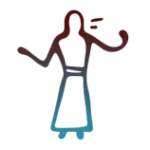Akwesasne: Important Terms & Explanations
The Akwesasron:non, people of Akwesasne, and our community are vibrant and unique with a rich history spanning centuries. There are many ways in which Akwesasne and our people are described and the use of certain terms vary depending on topic, perspectives and individual preferences. Below is a resource of commonly used terms you might hear in Akwesasne or read on our website, with a brief explanation of the meanings and origins. Some are terms that were given to us like the Iroquois and others are terms that we call ourselves like the Haudenosaunee.
The Akwesasron:non, people of Akwesasne, and our community are vibrant and unique with a rich history spanning centuries. There are many ways in which Akwesasne and our people are described and the use of certain terms vary depending on topic, perspectives and individual preferences.
Below is a resource of commonly used terms you might hear in Akwesasne or read on our website, with a brief explanation of the meanings and origins. Some are terms that were given to us like the Iroquois and others are terms that we call ourselves like the Haudenosaunee.
People of the Flint
What we call ourselves: Kanien’keha:ka
The Kanien’keha:ka, or Mohawks as we are known in English, means “People of the Flint.” We have managed to preserve, maintain and foster a unique culture for thousands of years. This dynamic culture has survived despite the many challenges we have experienced since the arrival of Europeans.
Generic terms like Indian, American Indian, Native American or Aboriginal people are used today. The Haudenosaunee people prefer to be known by the specific names of their nations, thus Mohawks prefer to be called Kanien’keha:ka, “People of the Flint.”
- Kanien’keha, “Mohawk language”. This language is still practiced today and taught in our schools. Many efforts are being made to revive the language; through full immersion programs, schools, educational initiatives and workshops.
- Onkwehón:we, “the Original Peoples”. We also refer to ourselves as Onkwehón:we, Mohawk language term which translates to the “Original Peoples,” “original living beings,” or “people living in accordance with their original instructions,”
Mohawk Clan System
Among the Haudenosaunee are groups of people who come together as families called clans. As a matrilineal society, each clan is linked by a common female ancestor, with women possessing a leadership role within the clan. The number of clans varies among the nations, with the Mohawk only having three to the Oneida having nine. The clans are represented by birds and animals and are divided into the three elements: water, land and air. The bear, wolf and deer represent the land element, the turtle, eel and beaver represent the water element and the snipe, hawk and heron represent the air element. For more information on the Haudenosaunee clan system, please visit here.
The Haudenosaunee Confederacy aka Iroquois Confederacy
Commonly called the Iroquois Confederacy by the French, and the League of Nations by the English, the confederacy is an alliance among six Native nations, with a common goal of living in harmony and peace. Unified by an agreement to live under the Great Law as provided by the Peacemaker, these nations recognize themselves as Haudenosaunee, meaning “People who build a house” or “People of the longhouse.”
Often described as the oldest, participatory democracy on Earth, the Haudenosaunee Confederacy is the model upon which the Constitution of the United States is based. Although Haudenosaunee communities have many cultural similarities and family connections, each one is unique and has its own distinct language and role within the confederacy. For more information on the Haudenosaunee Confederacy and nation roles please visit this site.
The Kanien’keha:ka/Mohawks constitute one of six nations in the confederacy. The others are the Oneidas, Senecas, Cayugas, Onondagas and the Tuscaroras.
Akwesasne
Akwesasne translates to “Land where the partridge drums,” which is described by the drumming mating call of the partridge or thumping sound of ice meeting the rapids along the St. Lawrence River. Akwesasne straddles the countries of Canada and the United States of America; the Canadian Provinces of Ontario and Quebec; and the American State of New York. The unique geographical location is governed by three independent bodies:
- The Mohawk (Kanien’keha:ka) Nation Council and its Chiefs are the designated representatives of the Sovereign Mohawk Nation. They are sanctioned by the Haudenosaunee Confederacy, and are participants in Grand Council sessions affecting the Mohawk Nation and other Confederacy members. The Mohawk Nation Council is an ancient democratic government that was in operation centuries before European contact.
- The Saint Regis Mohawk Tribal Council (SRMT) make up the elected representatives of the southern portion of Akwesasne (New York State), consisting of three elected officials for Tribal Chief, Tribal Sub-Chief and Tribal Clerk position. The Saint Regis Mohawk Tribe governs the southern portion of Akwesasne.
- The Mohawk Council of Akwesasne (MCA) is the elected representatives of the northern portion of Akwesasne (Canada), consisting of twelve district Chiefs (3 districts) and one Grand Chief position. The Mohawk Council of Akwesasne governs the northern portion of Akwesasne.
Akwesasne is one of eight different Mohawk communities; today the Mohawk people are spread out, Akwesasne/St. Regis (Quebec, Ontario & New York State), Ganienke (New York State), Kanesatake (Quebec), Kahnawake (Quebec), Tyendinaga (Ontario), Wahta/Gibson (Ontario), Kanatsiohareke (New York State), and Six Nations (Ontario).
What is the Creation Story?
The Creation Story is the first story to be told. It is an oral story, passed down from time immemorial. It is the story of how we came to be. Our Creation Story begins in the Sky world, detailing the journey of Sky Woman, her descent to the world of water below and the creation of Mother Earth. To learn more about the Creation Story, visit the Native North American Traveling College while in Akwesasne.
[sliders_pack id=”2576″]




